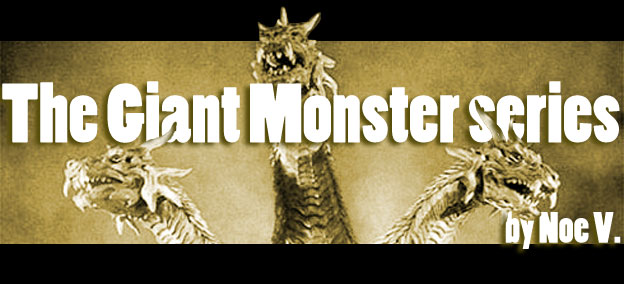
From 2009 through 2010 Privateer Press was trying to make Monsterpocalypse one of the most popular tabletop game systems ever. They used a grassroots approach to appeal to the community. They incorporated player feedback from local game stores during play testing. They maintained a certain level of transparency at every step of the process. They would answer questions, share notes and post previews right on the company website. They used word of mouth to help build a following. They toured the country visiting all the major conventions and showed off this system alongside their flagship Warmachine and Hordes systems. The studio had incorporated new manufacturing technology to help streamline production. They created pre-painted miniatures with built in counters and made the game board out of paper maps to help cut costs and appeal to entry-level gamers. For the most part they did everything right by the system and for the system. Any company trying to get noticed in the gaming world should study what Privateer did during those early years.
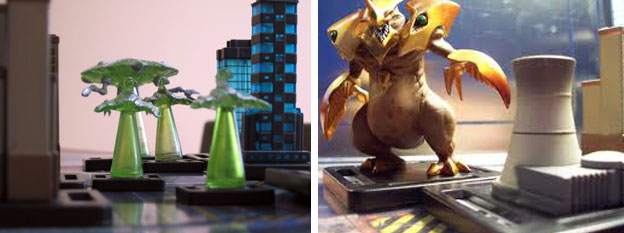
It was hard to ignore the appeal of the game. Who would not want to try monsters versus aliens versus robots? The mix of genres seemed like a perfect fit for tabletop gaming. Giant monster games were rare for the community and miniature based systems even more so. The attention to detail that Privateer put into the sculpts and paint jobs were amazing. Players could enjoy watching their monsters fend off an invasion or level a city with reckless abandon. The system managed to become so high profile that it got some unexpected attention from the government. The Series 3 All Your Base expansion was flagged by Homeland Security and could not be distributed in the country until it got cleared.
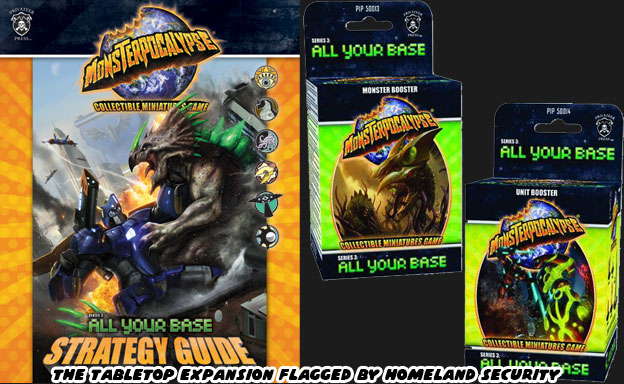
This immediately started debates on various tabletop gaming sites both in and out of the US. People couldn't believe that tax dollars were being wasted investigating a game, especially when gaming was supposed to be protected by the First Amendment. Players questioned the reasoning behind this and wondered what other games and systems the government began keeping track of in the name of security. It was possible that the post 9-11 world made some groups very paranoid. Players speculated it was because the game was dealing with mass destruction and some high profile landmarks, copies of the Empire State Building and Statue of Liberty, were targets in the game. Others said it was because some of the factions were against the military industrial complex and expounded radical thinking. The government agency never revealed the findings of their inquiry. The expansion was cleared by Homeland Security a few weeks later. Store owners were put off by the delay but not as much as gamers were. Privateer relished in the free publicity.
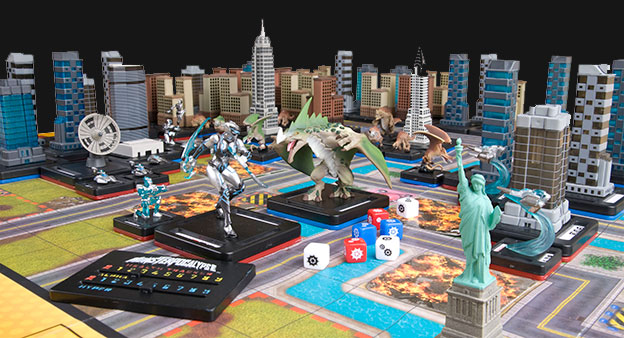
After three expansions the system had hit its stride. The middle of 2010 saw the introduction of Block 2 and the first of the six new factions. It was far along now and could hold its own against the original games created by Privateer. Monsterpocalypse was unlike the other systems though. It was unique in the scope, scale, production and genre. Tabletop games could be lumped into one of two genres, the fantasy or science fiction type. Even with the advent of pre-painted miniatures the genre was still mostly either fantasy or sci-fi. Pre-painted superhero Clix-type games were growing in popularity. The Marvel, DC and even Halo universe were each licensed for their own Clix game. Privateer found a way to combine the best elements of the Clix system with their own design philosophy. They ended up building a game that had no parallel. It was not quite sci-fi or fantasy but a mix of the two set in a modern world. No other studio was savvy enough to address the wants of veterans while making a system that appealed to beginners. No studio even considered the giant monster as the perfect template for a new type of game.
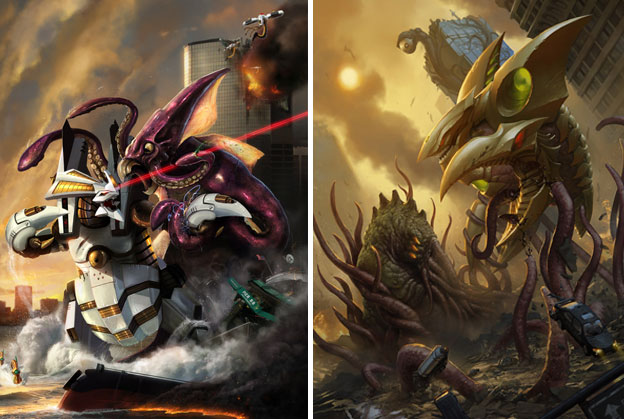
The popularity that Monsterpocalypse enjoyed helped validate for the work of Privateer. The system was gaining momentum at a record pace. Within two years the world Privateer created had established its own canon. The factions were rich with history, strong personalities and defined objectives. It had a distinct style that rekindled memories of classic cinema while also pulling in influences from comic books, animé and modern features. People could be fans of the game without being familiar in any other series. Perhaps Privateer got a little too comfortable with their position. The game possibly grew too quickly for its own good and was pushed too hard by the company on players. The expansions were beginning to come one after the other, leaving little room for players to get used to the changes in game play. Buying new factions was proving to be a costly gambit. The buildings, monsters and support were randomly boxed in each case. Players had to buy several "blind" boxes in order to find the figures that they needed or had to pay marked up prices on eBay. Privateer then began looking for licenses to make the game even more appealing. For some players the game "jumped the shark" when the studio announced that they would be featuring a crossover with Voltron. The robot was made popular in cartoons from the 1980s. The Defender of the Universe got a big push by Privateer and was forced into Monsterpocalypse canon in July 2010.
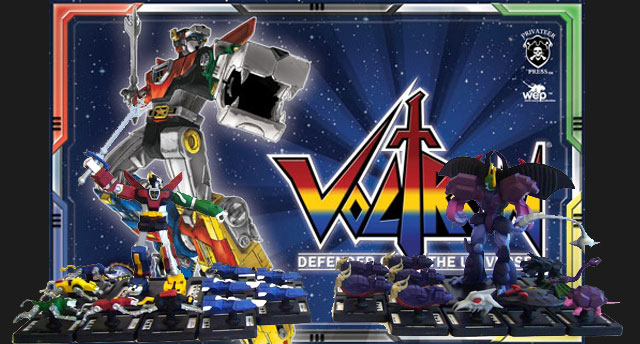
It made little to no sense why the studio would adopt a cartoon character. As cool as he was, especially to kids that grew up in the 1980s, the premise of a giant robot made up of lions seemed a little too campy for the Monsterpocalypse universe. The studio had gone out of their way to create art, articles and rules with a certain tone. The world of Monsterpocalypse was fairly serious, any humor in it was a bit dark. The monsters, robots and aliens were created in earnest and maintained a certain level of realism. The inclusion of Cthulu-like creatures that cursed the ground they walked on and turned humans into abominations pretty much summed up the established canon. All of a sudden there was a new brightly colored robot in the world, brandishing a huge sword, not representing any faction but himself.
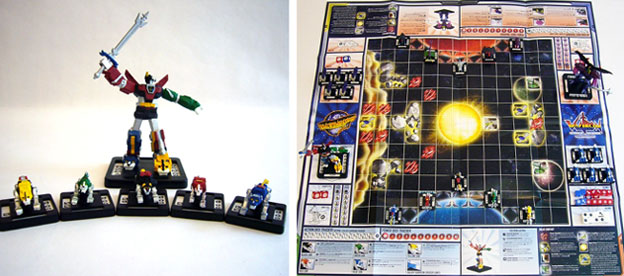
Privateer used the same basic rules of Monsterpocalypse to build a standalone version of the Voltron game. His main rival was an evil dopplegänger named Lo-tron. Instead of fighting over a city the pair were dueling out in the cosmos. Interest in the expansion was almost nonexistent. It marked the moment that interest in Monsterpocalypse began waining. Monsterpocalypse earned good reviews on the BoardGameGeek and was ranked the 578th most popular game on the site with over 700 votes. By comparison the Voltron game did not manage to rate nearly as well. The stand alone version was ranked at 3278 on the list and had garnered only 59 votes from editors and visitors. The title seemed to hurt the brand more than help it. The seeds of doubt for the franchise were actually planted earlier.
A few months before Voltron arrived Privateer posted a press release with a major announcement. On May 2010 DreamWorks had secured the rights for a film adaptation. This was the same studio that had marginal success with Monsters versus Aliens. People that remembered the animated film winced at the news. By July 2010 the studio announced that Tim Burton was selected to direct the feature. Burton would be joined by long time collaborator and screenwriter John August. Fans of the game gave mixed reactions. They appreciated Burton's directing style but were concerned that he would completely redo the canon to fit his artistic vision. After all he took the trading card series Mars Attacks and turned it into a campy, big budget mess. Many were afraid that he would do the same thing to the Privateer game.
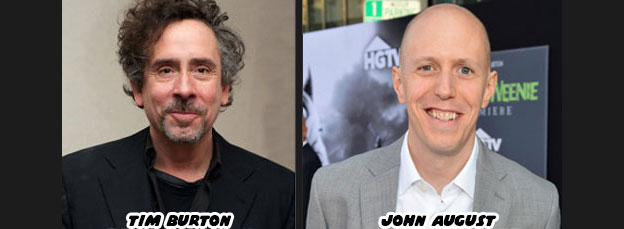
Spring of 2010 saw the 5th expansion to the game released. Big in Japan was actually delayed due to production issues and growing global consumer demand. Players were expecting to see a sixth update by the end of the year but it never came to fruition. After the Voltron and the movie announcements the system seemed to stall. Privateer stopped updating the Monsterpocalypse website any news. The studio seemed to drop all articles or mentions of the game from their No Quarter magazine as well. Only fan-organized events and tournaments seemed to keep the game alive. The gaming group Team Covenant took to hosting online games for the community. The continued to ask anyone and everyone at Privateer what had happened to the system. For over two years the company stayed tight lipped. It was as if everything they had worked so hard on no longer mattered. Worse that they built up the community and suddenly pulled the game out from under them.
John August hinted on his Twitter feed that the reason the company had become so quiet was because they were waiting for the numbers on Guillermo Del Toro's Pacific Rim movie. If the Warner Bros. produced film generated good buzz and a huge box office then DreamWorks would push to get Monsterpocalypse done. If not then they might just let the rights expire. This was terrible news for fans of the game. It seemed that Hollywood had killed the system and community. They cared little for Monsterpocalypse at all and just saw something that they could exploit for a quick buck. Those that grew up with the Transformers animated show in the 80s and compared it to the Michael Bay movies knew what Hollywood was capable of. Audiences wondered what type of deal Privateer had signed up for. Why couldn't they continue to support and build expansions for the system? Was development halted on the IP because of what DreamWorks or Tim Burton had planned? Was the game really going to change direction, game play or factions based on what the movie established? One of the last posts from Privateer was a preview for the next wave of creatures. They appeared to be expanding the Tritons, Savage Swarm and Empire of the Apes factions from the Second Block. The figures were very far along in the process but never made it to market. Four years after that post most players had given up hope.

Fans felt burned by Privateer and for good reason. They had invested their time and money with the promise that the system would continue to be supported. They had previously never come across any publisher that dropped an entire system without warning. It was actually unheard of! Even Games Workshop, the huge studio from England, had developed and dropped a dozen great titles. They slowly weaned players off of a system before putting them in the "Specialists Games" section of their catalog. It was a warning that the system would no longer be supported. Privateer Press was the alternate to Games Workshop. They were the little studio that made big waves because they cared about the community. Every game they had developed they had supported to their fullest. At least they had let on that they did. The company had built their reputation by winning over players at many conventions. One by one the employees would look a player in the eye, shake their hand and introduce them to a new game. Monsterpocalypse had started out like this and certainly deserved a better fate.
All of the hype that the company had put on the community turned out to be nothing but that… hype. Many players had ended up sitting on hundreds of models. Those figures stopped being collector items rather quickly. The miniatures not kept for their novelty value were sold off for a loss. The independent game stores were burned by Privateer just as much as the fans. They had stocked shelves thinking that the company would keep running with the line as they had with Hordes and Warmachine. The energy that followed the system from convention to convention had dried up. The company stopped featuring the game altogether and employees did not bother to acknowledge its existence. Privateer kept the system in a shallow grave, hopeful that they might be able to resuscitate it and turn a hefty profit should a movie ever be released. Fans were also hoping for a return of the system but had no guarantee that it would be the same. For all they knew the company would start all over, drop the rules and factions and turn it into a board game. Nothing that Privateer or the fans did would hurt or help the chances of seeing a film. The movies were coming despite whatever plans Privateer had made. If there was a silver lining for the genre was that it would never disappear. In fact some of the best animated work in the past decade was created by teams that loved the genre. Find out about one of these artists on the next and final blog in the series.
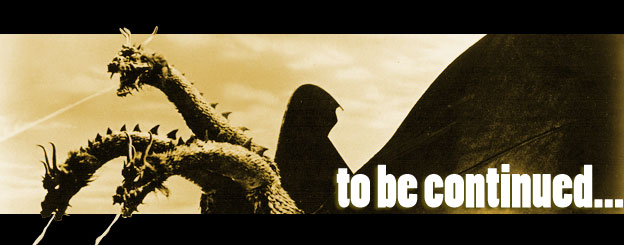
Yes! Thank you! This is my all time favorite game.
ReplyDeletehttps://natewinchester.wordpress.com/2017/09/20/nate-loves-minis-1-monsterpocalypse/
https://natewinchester.wordpress.com/2018/03/16/friday-fun-monsterpocalypse-returns/
https://natewinchester.wordpress.com/2018/03/16/friday-fun-monsterpocalypse-returns/
If PP would just release - they don't even need to give us the figs, just release the stat proxies on set 6 I could finally achieve some inner peace.
But really, thx again for the info. A lot of this I knew at the time because I played (in fact, the world champion one year was one of the guys in our play group) but some of it was still never told. It's great to FINALLY get some closure on this.
Ok, now that I've read this in detail (skimmed it first time), a few notes.
ReplyDeleteThe game possibly grew too quickly for its own good and was pushed too hard by the company on players. The expansions were beginning to come one after the other, leaving little room for players to get used to the changes in game play.
Yes and no. One thing that did help was that the company distributed the game sanely. So a player could buy an entire "box" of packs and get all the monsters of the set and a good mix of units. This went sideways in set 5, Big in Japan. PP made the stupid choice to introduce "character units" - unit figures that were unique versions of more common ones with improved stats and abilities. The big problem was that every faction got a character unit. (see them here: http://gameknave.com/monpoc/?figure=&type=character&hazard=&language=english&format=card&form=&class=&faction=&agenda=&energyType=&set=&setColor=&rarity=&speed=&defense=&energy=&brawl=&brawlBoost=&blast=&blastBoost=&blastRange=&power=&powerBoost=&health=&hyper=&cost=&limited=&ability=) But a BOX of unit packs would - at most - come with only 3. Meaning that if you wanted to get every unit, you had to buy 2 boxes MINIMUM (whereas previously if you bought 1 box you usually got nearly everything you needed).
Still, I was thrilled when right at the end, they started rereleasing the game in an LCG format where you knew the contents of what you were buying. I actually hoped if the game returned they would stick with that format.
All of a sudden there was a new brightly colored robot in the world, brandishing a huge sword, not representing any faction but himself.
New faction, yes, but both sides were still in the usual agendas.
Interest in the expansion was almost nonexistent.
Part of it is that it wasn't a real expansion as much as an introductory starter to get people interested in the game. Especially as they tried to reduce the cost of it making this box just a bit cheaper than a normal starter set. The figures in the set were generally lackluster so nobody ever felt the need to bring them to a game. (I think I saw one of the versions with their Ultra edition in a tournament - once.)
Worse that they built up the community and suddenly pulled the game out from under them.
That - THAT is what broke our hearts and why I would be happy if they would just release the STATS of what the 6th set would have been.
Now as always, you take what's on the internet with a grain of salt, but when I was reading: http://www.belloflostsouls.net/2018/03/privateer-press-revives-the-monsterpocalypse.html, I found in the comments this note (who's truthfulness is unknown, but it does explain things)
"When PP tried to sign a movie deal with a studio, Pacific Rim was marketed and the same studio liked that one more. The conditions of the movie basically stopped PP from producing their own IP, give the script to a competing studio, or even talk about how the studio screwed them over. But I guess the conditions of the studio have faded after...ten F%$king years. God I hate Hollywood, I mean I'm from Texas so the feeling was already present."